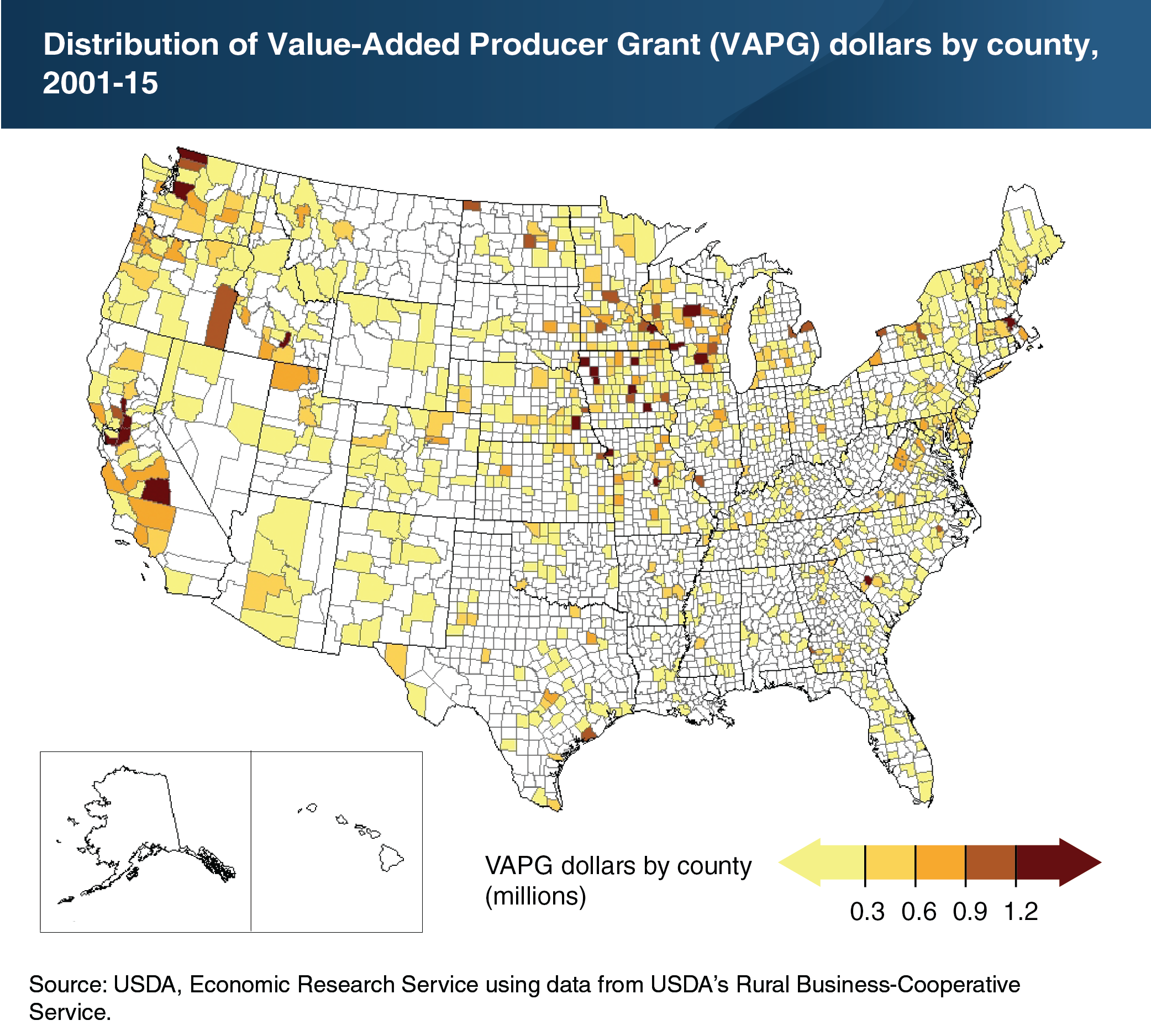USDA’s Value-Added Producer Grants concentrated in the north-central, western, and northeastern United States
- by John Pender and Anil Rupasingha
- 7/9/2018

USDA’s Value-Added Producer Grant (VAPG) program provides grants intended to enable farmers and ranchers to add greater value to agricultural commodities, such as through additional processing or marketing of new products. For example, producers could adopt organic practices, turn berries into jam, or process meat into sausage. Between 2001 and 2015, the program provided a total of 2,345 grants to farmers and ranchers—a total value of $318 million, or about $136,000 per grant, on average. These grants were concentrated mainly in the north-central, western, and northeastern regions of the United States. The north-central States of Iowa, Wisconsin, Missouri, Nebraska, and Minnesota received a combined 28 percent of all grants. Overall, a little over half of grant recipients were located in rural (nonmetro) counties. Promotion of value-added agriculture has been seen by some researchers and policymakers as a strategy to promote increased rural employment and income. This chart appears in the May 2018 ERS report Impacts of USDA’s Value-Added Producer Grants Program on Business Survival and Growth.
We’d welcome your feedback!
Would you be willing to answer a few quick questions about your experience?

